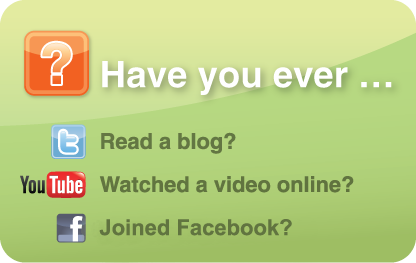Volume 1 Issue 2 |
|
| U.S. Headquarters Crystal McKenzie, Inc. 220 East 23rd Street, Suite 305 New York, NY 10010 Tel 212-598-4567 Fax 212-598-4566 contact@cminyc.com cminyc.com |
CMI provides creative services for business and senior-level decision makers who proactively seek to deliver an exceptional key-stakeholder brand experience. Referrals are the foundation of our business. Please share our contact information and/or a referral's name with us. Thank You! In This Issue Social Media Marketing Maintaining popularity
@ next issue:
CMI Links
U.S. Headquarters
|
Social Media Marketing
Facebook, Twitter, and YouTube — these are all social media websites where much of the content is user-generated. Companies can make use of such websites to increase brand awareness and collect feedback from its customers, among others. Buzz that is generated on such websites spreads quickly because of their viral nature — users are constantly sharing information with others in their network, who are in turn sharing with those in theirs, and so on. Social media websites are growing quickly (four of the ten websites with the most traffic in 2009 were social media websites, compared to just one in 2005), and because they allow companies to reach out to a large base of potential customers for free, have become a popular destination for the marketing efforts of many organizations.
Don't
Maintaining popularity
Take Coca-Cola, Starbucks, and Amazon, as examples. Despite growing circles of competitors, these companies have consistently remained some of the most popular brands in their industries by building sophisticated advertising campaigns that have convinced consumers their services and products are unrivaled. Often emulated but never equaled, they’ve become industry standards, seeping deeper and deeper into the culture in which we live. Keep in mind that advertising, while costly, has many advantages. Unlike a public relations campaign, which is generally aimed at a broader audience, an ad campaign gives you almost total control over the perceptions of your audience and allows you to direct your message specifically to that audience. Advertising is usually only successful once your popularity has been built through a public relations campaign, as the goal of advertising isn’t to become well known, but to stay well known. There are several ways to create a cost-effective advertising campaign. Many magazines and newspapers will negotiate standard ad rates for first-time buyers, since they’re competing with other publications for your business and want to develop a long-term relationship with you. Also, you can save big on long-term contracts with particular publications because prices go down with frequency. For example, a one-time ad that costs $3,000 may cost only $2,500 to publish each month in a certain publication over several months. Frequency campaigns are recommended because they are more effective at building public awareness than are one-time ads. Also, since the goal of an ad campaign is simply to increase awareness about your organization, product, or service, don’t be disappointed if the first ad campaign doesn’t rake in sales. Ad campaigns take time to result in big profits, but, as McDonalds and Nike have shown, the investment is well worth the wait.
@ next issue:
“Trademarks, brand names, logos or other slogans that may appear from time to time in this publication are for reference purposes only and do not constitute an endorsement of CMI by any of those entities.” |
CRYSTAL MCKENZIE, INC | 220 EAST 23RD STREET, SUITE 305 NEW YORK, NY 10010-4677 | 212-598-4567 |


